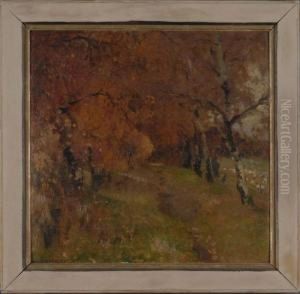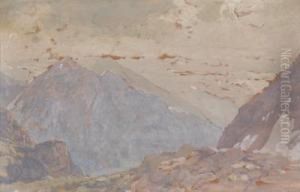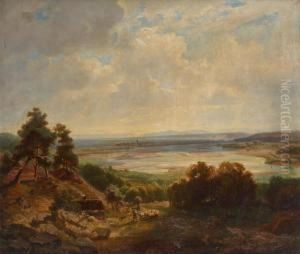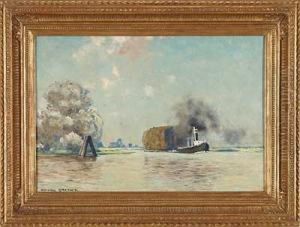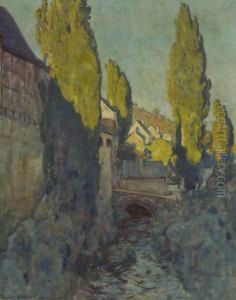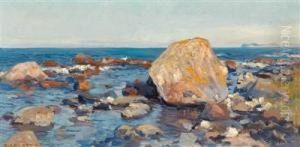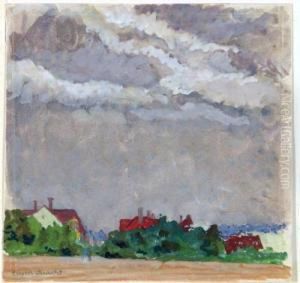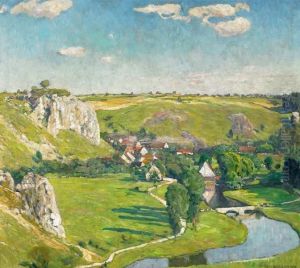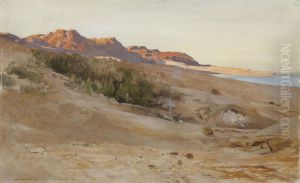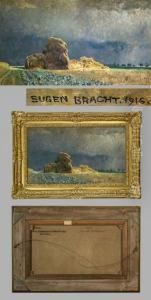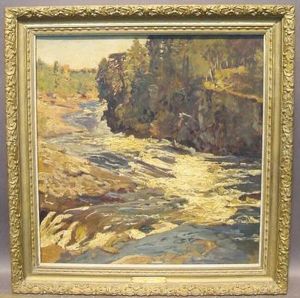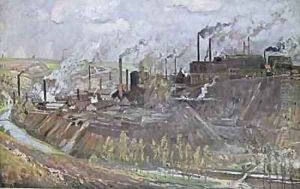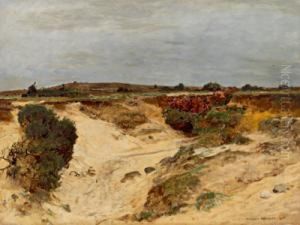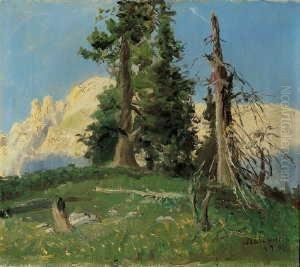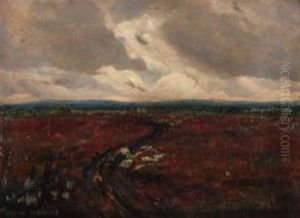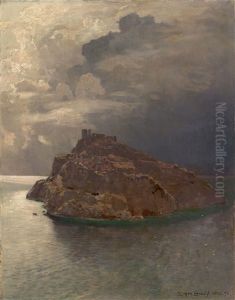Eugen Felix Prosper Bracht Paintings
Eugen Felix Prosper Bracht was a notable German landscape painter, born on June 3, 1842, in Morges near Lausanne in Switzerland. Despite his Swiss birth, he spent the majority of his life and career in Germany and is associated with the Düsseldorf school of painting. Bracht's family moved to Darmstadt, Germany, when he was a child, which is where he later studied at the Grand Ducal Saxon Art School.
Initially, Bracht pursued a career in business, following his father's footsteps, but he soon realized his true passion was in the arts. In 1864, he enrolled at the Düsseldorf Academy to study painting, where he was influenced by the works of Andreas Achenbach and Hans Fredrik Gude, both of whom were prominent landscape painters of the time.
Bracht's style was characterized by his majestic and often dramatic representations of nature. His landscapes typically featured a meticulous attention to detail and a keen perception of natural light and atmosphere, which he captured using a rich palette of colors. His works often depicted the moody and rugged terrain of the Rhine region as well as the ethereal beauty of the Swiss Alps.
After his studies, Bracht traveled extensively throughout Europe, including a significant trip to the Middle East in 1874, which had a profound influence on his work. The dramatic landscapes of Syria and Egypt inspired him to create some of his most memorable paintings, characterized by the use of light and shadow to evoke mood and emotion.
Bracht's career took a significant turn in 1882 when he accepted a position as a professor at the Grand Ducal Art School in Weimar. He became a respected teacher and continued to evolve his style, influencing a new generation of landscape artists. During his tenure in Weimar, he became associated with the Barbizon school, a French landscape movement that emphasized plein-air painting, or painting outdoors directly from nature.
In 1890, Bracht was called to Berlin to become a professor at the Royal Academy of Arts. He served in this role until his retirement in 1910. During this time, his reputation continued to grow, and he exhibited his works widely, receiving numerous awards and honors.
Eugen Bracht died on November 5, 1921, in Darmstadt. His legacy is preserved in the form of his numerous paintings, many of which can still be seen in museums and galleries around the world. Throughout his career, he maintained a deep connection with nature, which remained the primary subject of his artistic expression until the end of his life.

